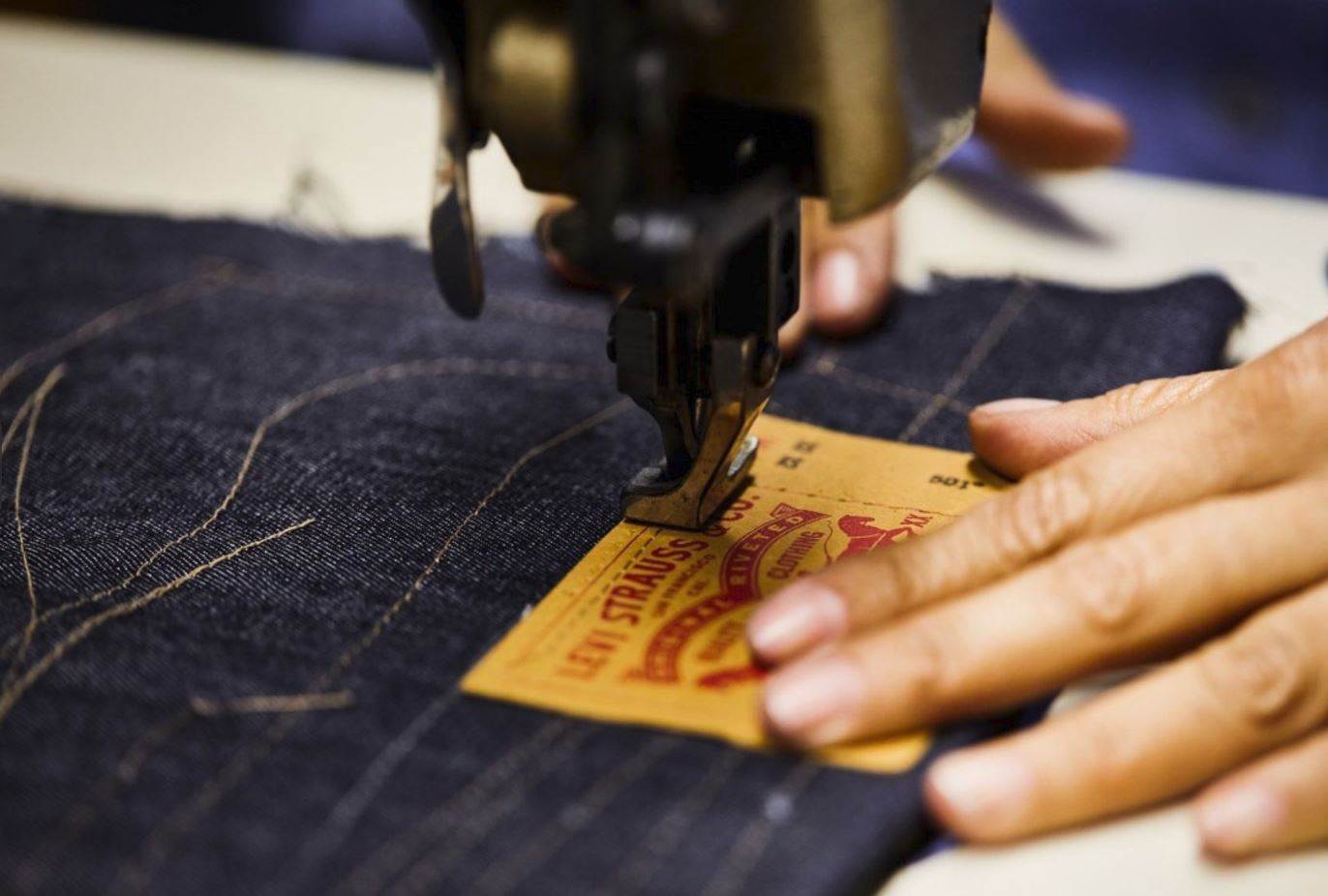Strict targets for Levi’s suppliers outlined in report
28/09/2023

Denim brand Levi’s has announced progress towards its sustainability goals in its latest report, including work done by and with its suppliers to cut water usage and greenhouse gas emissions.
For water, it used an estimated 15 billion litres of freshwater for manufacturing in areas of high water stress in 2021, a 14% reduction from the 2018 base year. Total freshwater usage in 2021 was higher than 2020 due to increased levels of production volume following COVID-19-related supply chain disruption.
Its goal is to reduce freshwater use in manufacturing by 50% in areas of high water stress by 2025 against a 2016 baseline. “To meet our goal, we plan to redouble our efforts to encourage more water recycling and other water efficient processes with our supply chain partners,” it said.
It aims for 40% absolute reduction in supply chain greenhouse gas (GHG) emissions by 2025 against a 2016 base year. During 2022, it reduced supply chain GHG emissions by 23% from the base year through its partnership with suppliers. “We are working with our key suppliers to make sure their emission reduction targets are at least 40% of the base year. These efforts will require changes to both equipment as well as investment in renewable energy of multiple forms,” it said.
Another aim is that strategic garment wet finishing manufacturing and fabric mills use 100% certified Screened Chemistry by 2026. “To advance the progress toward the goal and our commitment to sustainable chemical management, our key suppliers participated in the Zero Discharge of Hazardous Chemicals’ (ZDHC) Roadmap to Zero program, which is a holistic approach toward chemical management and is foundational to our Screened Chemistry programme.”
Levi’s also aims for zero waste to landfill from company-operated facilities and 50% waste diversion across strategic suppliers by 2030. It will certify company-operated distribution centres and manufacturing plants with TRUE Zero Waste. It participates in a Fashion for Good project in Europe that aims to create solutions to match textile waste with recyclers, as well as a sorting project in India to research the volume and use of pre- and postconsumer textile waste. In the United States, it is part of a Fashion for Good consortium of stakeholders studying garment recycling. “By understanding consumer behaviour and the overall landscape around textile disposal, we hope to identify alternatives to landfill for consumer garments and textiles,” it said.
CEO Chip Burgh commented: “As you’ll see, we’ve made some very real progress. For example, since we published our initial climate goals in 2018, we’ve reached 90% renewable electricity in company operated facilities, reduced Scope 1 and 2 GHG emissions by 71% and Scope 3 GHG supply chain emissions by 23% (from a 2016 base year) and continued talking to consumers about overproduction and overconsumption.
“These are signposts of a broader effort to be better stewards of the resources we use and to look after our communities. We know we have a way to go, but I’m confident that we’re moving in the right direction.”
For water, it used an estimated 15 billion litres of freshwater for manufacturing in areas of high water stress in 2021, a 14% reduction from the 2018 base year. Total freshwater usage in 2021 was higher than 2020 due to increased levels of production volume following COVID-19-related supply chain disruption.
Its goal is to reduce freshwater use in manufacturing by 50% in areas of high water stress by 2025 against a 2016 baseline. “To meet our goal, we plan to redouble our efforts to encourage more water recycling and other water efficient processes with our supply chain partners,” it said.
It aims for 40% absolute reduction in supply chain greenhouse gas (GHG) emissions by 2025 against a 2016 base year. During 2022, it reduced supply chain GHG emissions by 23% from the base year through its partnership with suppliers. “We are working with our key suppliers to make sure their emission reduction targets are at least 40% of the base year. These efforts will require changes to both equipment as well as investment in renewable energy of multiple forms,” it said.
Another aim is that strategic garment wet finishing manufacturing and fabric mills use 100% certified Screened Chemistry by 2026. “To advance the progress toward the goal and our commitment to sustainable chemical management, our key suppliers participated in the Zero Discharge of Hazardous Chemicals’ (ZDHC) Roadmap to Zero program, which is a holistic approach toward chemical management and is foundational to our Screened Chemistry programme.”
Levi’s also aims for zero waste to landfill from company-operated facilities and 50% waste diversion across strategic suppliers by 2030. It will certify company-operated distribution centres and manufacturing plants with TRUE Zero Waste. It participates in a Fashion for Good project in Europe that aims to create solutions to match textile waste with recyclers, as well as a sorting project in India to research the volume and use of pre- and postconsumer textile waste. In the United States, it is part of a Fashion for Good consortium of stakeholders studying garment recycling. “By understanding consumer behaviour and the overall landscape around textile disposal, we hope to identify alternatives to landfill for consumer garments and textiles,” it said.
CEO Chip Burgh commented: “As you’ll see, we’ve made some very real progress. For example, since we published our initial climate goals in 2018, we’ve reached 90% renewable electricity in company operated facilities, reduced Scope 1 and 2 GHG emissions by 71% and Scope 3 GHG supply chain emissions by 23% (from a 2016 base year) and continued talking to consumers about overproduction and overconsumption.
“These are signposts of a broader effort to be better stewards of the resources we use and to look after our communities. We know we have a way to go, but I’m confident that we’re moving in the right direction.”










